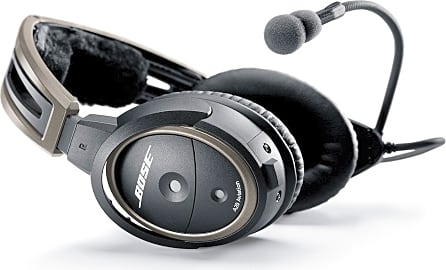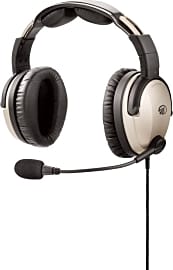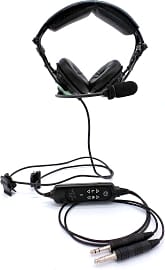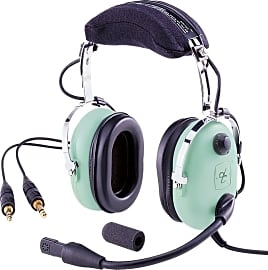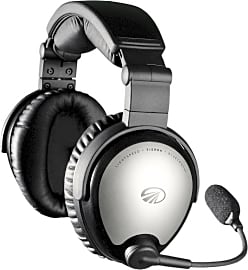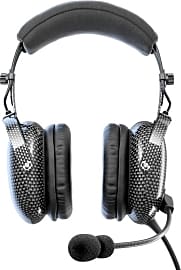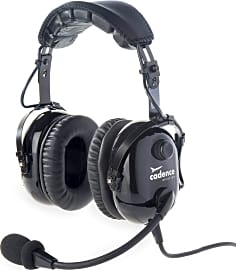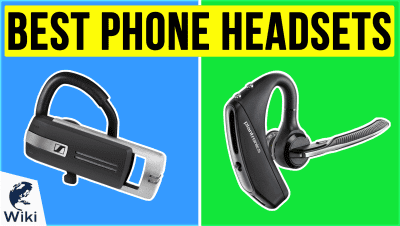The 10 Best Aviation Headsets

This wiki has been updated 34 times since it was first published in October of 2016. If you spend any amount of time in the cockpit of an airplane or helicopter, you'll probably want to pick up a pair of these aviation headsets. They are designed to sit on your head for hours at a time without causing discomfort, while blocking the persistent hum of the engines in your ears and enabling you to communicate clearly with the tower and your fellow pilot or passengers. When users buy our independently chosen editorial recommendations, we may earn commissions to help fund the Wiki.
Editor's Notes
November 01, 2020:
The two primary changes to our list came from Lightspeed and Cadence, with the former company discontinuing their Tango model, which we replaced with the Cadence CA501 Premium. To be fair, that Cadence model is best suited for relatively new pilots or those on a budget. They also might make a good backup pair, but ultimately they aren't built to last for years or serve as a primary set for serious aviators, even if they're relatively comfortable and effective. It's also important to note that they're a passive pair, which is another reason they might not make the best go-to option for a frequent flyer, as chronic exposure to the decibel levels they let through isn't ideal for the ears.
Lightspeed also upgraded one of their more popular models with the Lightspeed Zulu 3, and we chose to go with the model using the LEMO plug over the General Aviation standard, as a majority of the offerings on our list are GA, and we wanted to give readers — especially those looking for an all-in-one connection solution for power and comms — a viable option. They might ultimately be a better choice for owners than renters, however, which is what kept them from a top spot.
May 02, 2019:
While there have been a few minor reconsiderations among the entries in this category, no significant additions to the market have come along to unseat any of our ten previous selections. That said, the two Faro models previously held in our top five have both taken a dip to the eight and tenth spots, mainly due to wiring issues getting past the company's quality control. The result seems to be a kind of static or hum that arises when the wearer moves his or her head. In the case of the Faro G3, there's also a tension issue causing many to feel that they're simply too tight for the majority of heads, especially on longer flights.
Back toward the top of our list, the David Clark model previously at number three jumped up and stole the top spot from the Bose selection on our list. At the end of the day, no one can beat Clark's noise cancellation, and their padding is sufficient to keep a user comfortable for a significant amount of time.
Special Honors
Pilot Communications USA PA-1779M This military-grade model features an active noise cancellation system capable of damping out 47 dB of sound. You can choose to outfit them with either an M-101/AIC or M-87/AIC microphone, and select between an American and European wall charger. They weigh just a hair over a pound and are covered by a five-year warranty. pilot-usa.com
Active Headsests Inc 6001BT This pair boasts a reliable Bluetooth connection, as well as your choice of cable type, including GA, LEMO, and either a straight or coiled single plug. You can also get them in five colors, all of which come with a lightweight chrome headband padded with a thick cushion coated in supple New Zealand fleece. headsetsinc.com
Active Noise Reduction Versus Passive Noise Reduction
This doesn't mean that ANR headsets will leave you unable to hear anything going on around you.
One of the first, and arguably most important, decisions that you have to make when choosing a new aviation headset is whether you prefer active noise reduction — sometimes referred to as active noise cancellation — or passive noise reduction.
ANR headphones work by canceling out specific sound frequencies. A small microphone located in the earcup of an ANR headset picks up outside noise. The noise is then transferred to the headset's electronics, which power a small speaker inside of the earcup. This small speaker produces an exact replica of the outside noises, while at the same time the electronics add a signal that is 180-degrees out of phase with the original sounds sent by the microphone. A 180-degree, out-of-phase sound is an exact opposite frequency of the original sound. These two opposing frequencies cancel each other out, resulting in silence.
This doesn't mean that ANR headsets will leave you unable to hear anything going on around you. They are tuned to mainly cancel out low-frequency and repetitive sounds or those that contain a very limited number of frequencies — think the droning of an engine or hum of a large electronic device. High-frequency or constantly changing sounds, like somebody's voice or music, are more difficult to cancel out and will generally pass right through an ANR headset with minimal reduction. The fact that changing sounds are difficult to cancel out also means that if a constant low-frequency sound all of sudden experiences a change in frequency, like an engine suddenly reducing in power or a propeller slowing down, it should still be noticeable through ANR headphones.
PNR headsets work in a very different manner. Rather than using technology and opposing frequencies to cancel out sounds, they simply use soundproofing to muffle exterior noises. It is akin to what happens when you place your hands over your ears, though much more effective. To muffle exterior sounds, a PNR headset will make use of dense foam or gel combined with a pressure seal. The clamping action created by a headset's headband keeps the earcups firmly placed against the side of your head to create a seal that prevents exterior noises from entering.
The Different Types Of Microphones In Aviation Headsets
After determining whether your prefer an ANR or PNR headset, the next thing to look at is the type of microphone a given model uses. The primary types of microphones used in aviation headsets are electric, carbon, and dynamic. Electric microphones are the smallest and lightest of the three. They make use of a charged, flexible diaphragm that is set a very specific distance away from a fixed plate. As a user speaks into the microphone, the sound waves vibrate the diaphragm, causing slight changes in its distance from the plate. These changes are translated into electrical signals and then transmitted as sound. Electric microphones are the most effective at canceling extraneous noise and interference.
As a user speaks into the microphone, the sound waves vibrate the diaphragm, causing slight changes in its distance from the plate.
Carbon microphones are generally the least expensive of the three. They consist of two metal plates, which are separated by minute granules of carbon. When a user speaks into a carbon microphone, the sound waves hit the first plate, making it vibrate and exert a varying amount of pressure on the granules. The pressure effects the amount of electrical resistance the granules create. At the same time, a steady current is passed between the two plates. The varying electrical resistance causes a modulation in the current that mimics the varying pressure of the sound waves. These fluctuations are then amplified and transmitted. Unfortunately, carbon microphones have the narrowest frequency range of the three and they often produce a high amount of unwanted electrical noise.
Dynamic microphones offer a compromise between the high cost of electric mics and the low frequency range of carbon microphones. Inside of a dynamic microphone, there is a coil of wire attached to a diaphragm. This diaphragm is surrounded by a strong magnetic field. When a user speaks into a dynamic mic, the sound waves move the diaphragm and coil, generating an electrical signal. The voltage of this signal varies based on the amplitude and frequency of the sound waves. Despite being carefully shielded in aviation headsets, the magnetic field of dynamic microphones is susceptible to electromagnetic interference, which can result in garbled transmissions.
Other Considerations For Choosing An Aviation Headset
Typically, aviation headsets are worn for extended periods of time. For this reason, comfort is a major factor in how much you will like a particular headset. Models that are too tight can quickly cause a pounding compression headache, while models that are too loose won't be very effective at reducing outside noises. The best way to ensure that an aviation headset will fit you well is to choose a model that allows for a lot of adjustment. The more adjustment the headband allows, the easier it will be to position the earcups comfortably, while ensuring they create a nice seal at the same time.
Another nice feature some models have is a boom that swings all the way around.
You should also consider microphone boom adjustability. Some models have a fully adjustable boom that allows for precise placement, some may just have a hinge or two that let you move the mic closer or further from your mouth, and some may not be adjustable at all. Another nice feature some models have is a boom that swings all the way around. This allows you to wear the mic on the left or right side to suit your preference. As with headband adjustability, the more adjustable its microphone boom is, the more likely that aviation headset is to fit you comfortably.
The final considerations should be weight, padding material, and the amount of padding. Heavy headsets can strain the neck when worn for long periods of time and should be avoided. A good amount of padding around the ears and on the headband is nice, but can also add to weight and bulk. You'll have to find the right balance between too much and too little padding. Finally, consider the materials of which the padding is comprised. Gel padding is often heavier than foam, but many feel it provides better cushioning. A vinyl cover will often cause you to sweat more than a cotton cover, but usually creates a better seal.



